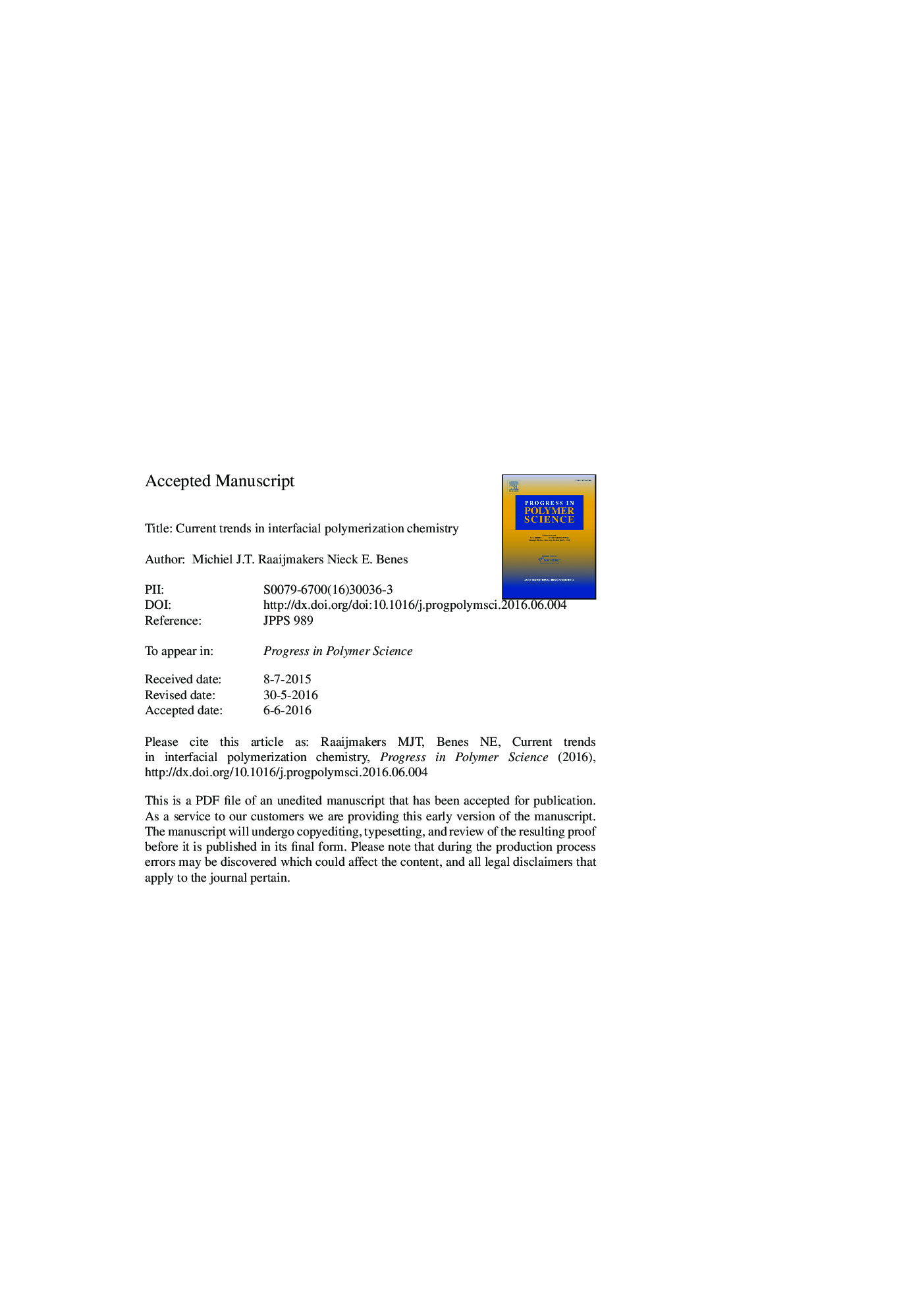| Article ID | Journal | Published Year | Pages | File Type |
|---|---|---|---|---|
| 5207919 | Progress in Polymer Science | 2016 | 89 Pages |
Abstract
Interfacial polymerization is an enabling technique for the large-scale production of ultrathin layers, hollow nanospheres and nanofibers. The availability of a wide range of suitable monomer reactants allows for the synthesis of an impressive collection of polymers, including polyamides, polyurethanes, polyureas, polyanilines, polyimides, and polycarbonates. In addition, the technique has been used to prepare defect-free, ultrathin films of metal organic frameworks, organic-inorganic hybrids, and bio-hybrids. This review provides an overview of the chemistry that is used in interfacial polymerization, discusses the (dis)advantages of derived material types, and assesses the future prospects for synthesis of ultrathin functional materials via interfacial polymerization.
Related Topics
Physical Sciences and Engineering
Chemistry
Organic Chemistry
Authors
Michiel J.T. Raaijmakers, Nieck E. Benes,
